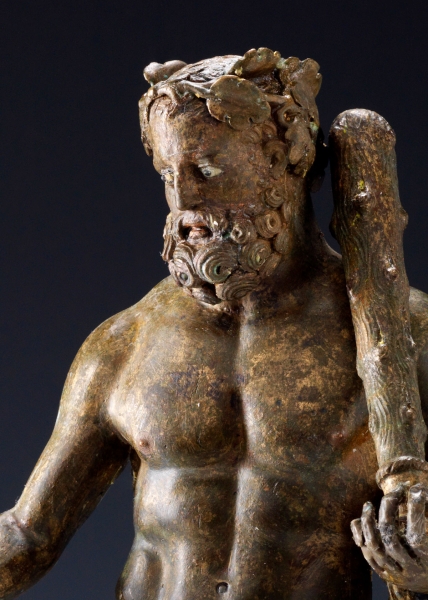

The Statue of Hercules in al-Faw is the only statue in the world that depicts Hercules or 'Heracles,' the emperor of the Byzantine Empire in his later years. The statue was found in al-Faw Village, southwest of the Wadi ad-Dawasir Governorate, affiliated with Riyadh Province, Kingdom of Saudi Arabia. The statue depicts Hercules, who is over forty years old, holding a club in his right hand and a lion's skin in his left hand.
The Hercules statue is made of bronze, and its history dates back to the period between the third century BC and the third century AD. It is considered a historical piece of art, garnering global acclaim from experts in archaeology. Archaeologists have written about it in their research, and it has been discussed in numerous studies and scientific journals.
The bronze statue of Hercules stands at approximately 25.3 cm in height. This meticulously crafted statue exemplifies the prowess of the ancient inhabitants of al-Faw Village in statue-making with great skills. Al-Faw civilization is regarded as one of the advanced civilizations in the fields of engraving, painting, and writing.
Al-Faw archaeological village
Al-Faw Village dates back to the pre-Islamic era and is one of the most prominent archaeological regions in the Arabian Peninsula. It contains several archaeological landmarks that demonstrate the gradual development of its civilization. Positioned prominently along an ancient trade route, al-Faw served as an important economic hub, acting as the starting point for trade caravans bound for the Arabian Gulf, Mesopotamia, the Levant, and the Hejaz. Its inhabitants were engaged in trade and agriculture, and it had close relations with several kingdoms in the southern Arabian Peninsula, including Sheba, Himyar, and Hadramaut, facilitating trade movements at the time.
ِAl-Faw archaeological village features a comprehensive urban fabric. Its intricately decorated houses were built using square and rectangular bricks. The inhabitants used carved and polished stone for constructing foundations and tombs. Additionally, the interior walls of buildings were tiled using gypsum mixed with sand and ash.
Related quizzes
Related articles
